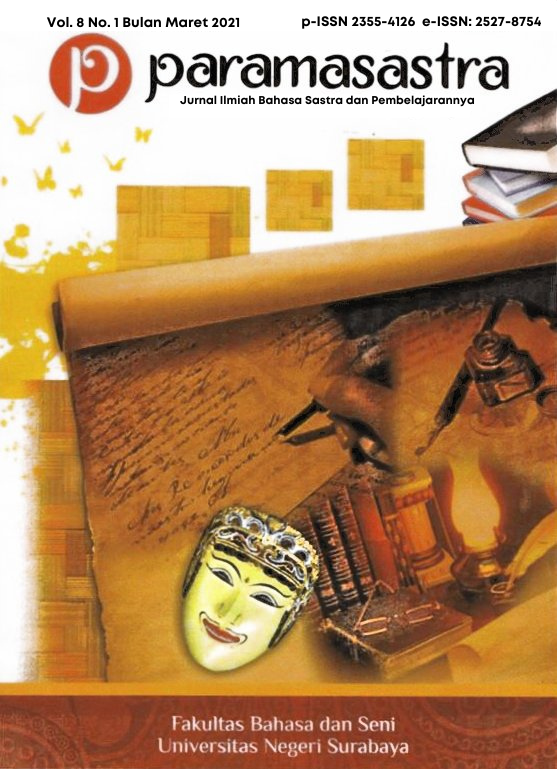STUDENTS WILLINGNESS TO COMMUNICATE USING ENGLISH: A SURVEY STUDY
DOI:
https://doi.org/10.26740/paramasastra.v8n1.p75-94Keywords:
Speaking, Foreign Language Anxiety, Willingness to CommunicateAbstract
In Indonesia, one of the common problems encountered by many English teachers during the process of teaching and learning in the classroom is students unwillingness to communicate using English. Having learners who are willing to communicate using English in class is essential in a language classroom that following the communicative approach (Riasati, 2012). This study aims to investigate students perceptions towards willingness to communicate using English in the classroom. It employs a quantitative approach, survey research design. To know the students willingness to communicate using English, a well-known FLCAS (Foreign Language Classroom Anxiety Scale) developed by Horwitz, E.K., Horwitz, and M. B., Cope J. (1986) was adapted. 115 students of SMK Negeri 10 Malang participated as the respondents. Based on the findings, it is concluded that tenth and eleventh grade students at SMK Negeri 10 Malang have a positive opinion towards willingness to communicate using English in the classroom. They stated that learning and communicating using English is essential and beneficial. However, their willingness to communicate using English itself is quite low and it is quite a serious problem.
References
Downloads
Published
How to Cite
Issue
Section
 Abstract views: 1688
,
Abstract views: 1688
, PDF Downloads: 3598
PDF Downloads: 3598












